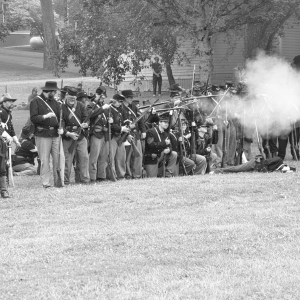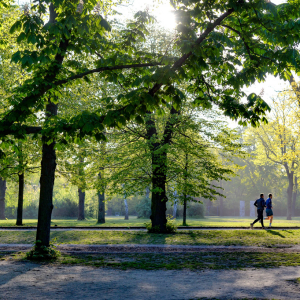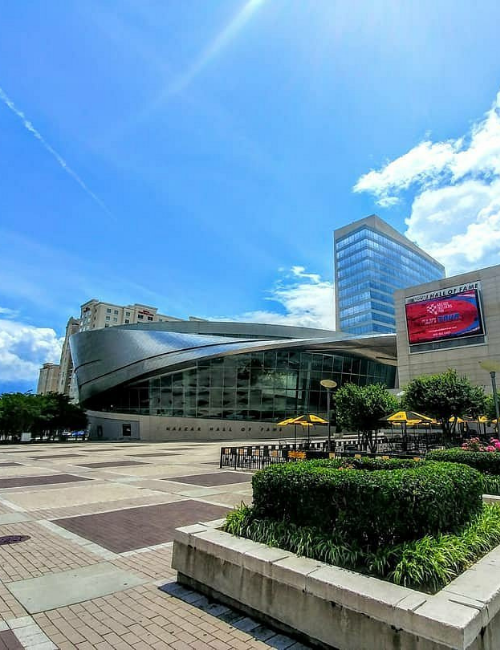
Charlotte, NC—often referred to as the “Queen City”—is a vibrant metropolis rich with history, culture, and unmistakable Southern charm. Known for its powerhouse banking industry and deep NASCAR roots, the city still holds plenty of fascinating secrets tucked between its towering skyscrapers and scenic neighborhoods. Whether you’re a longtime resident, a curious visitor, or simply exploring because we buy houses in North Carolina, uncovering Charlotte’s unusual and intriguing facts offers a fresh perspective on this dynamic city. Even those who have called this iconic North Carolina hub home for years may be surprised by these 10 remarkable insights.
Brief Overview
Charlotte, North Carolina, is a swiftly growing metropolis in the South, but under its modern skyline lies a place full with stories, legacies, and little details that surprise you. People often call the city the “Queen City” after Queen Charlotte of Mecklenburg-Strelitz. The name links the city to Europe and also ties it to American history. “Hornet’s Nest” is Charlotte’s second name. It stems from the fact that it was a rebellious site during the Revolutionary War. Charlotte went from being a little trading town to a major financial center. Places like the Mint Museum and Fourth Ward Park became more important throughout time, making the city rich with hidden secrets. Charlotte has a lot of intriguing things to do and see that aren’t the standard tourist sites. There are one-of-a-kind events, cultural enclaves, and even tunnels from the time of Prohibition.
Key Highlights
- Charlotte, North Carolina, is known as the “Queen City” because of Queen Charlotte of Mecklenburg-Strelitz.
- The term “Hornet’s Nest” came from the city’s strong opposition to British General Cornwallis during the Revolutionary War.
- Charlotte boasts unique events, including the Yiasou Greek Festival and Charlotte SHOUT! showing off its different cultures.
- Charlotte has hidden tunnels that were built during Prohibition and were used to carry alcohol.
- Charlotte’s Fourth Ward Park safeguards the city’s history while it evolves and is a place to learn.
A Trip Through the Queen City: Exploring Charlotte
Charlotte, North Carolina, is often called the Queen City. Hundreds of years of growth, war, inventiveness, and change have shaped its personality. Charlotte has old southern roots and new objectives. The neighborhoods appear like friendly invitations to different aspects of the city’s history. This city is fun to explore, whether you’re just visiting for the weekend or planning to remain for a long time. It honors its heritage while still welcoming new growth. If you know why Charlotte is dubbed the Queen City, it might help you comprehend the city’s culture and way of life better.
People call Charlotte the Queen City. What does that mean?
When British residents moved to the area in the late 1700s, the city and county were called Queen Charlotte of Mecklenburg-Strelitz. One way the early settlers showed their loyalty at the time was by praising the queen. The name Charlotte also meant “prosperity” and “prominence.” The moniker “Queen City” gradually came to reflect both where it came from and how it was flourishing. The nickname suits now when you go through uptown: it’s a place with huge skyscrapers, busy city streets, and a royal feeling of energy that runs through everyday life.
Charlotte has expanded a lot, yet it still boasts some of the elegance and charm that its name suggests. Many things in the city remind people of Queen Charlotte and the royal connections that are part of its character. These things include sculptures, art installations, and local branding. Charlotte’s growth as a major financial center strengthens its reputation as the “Queen City,” giving it a certain level of power and prestige in the South.
Charlotte’s royal name is still going strong today, and not just because of its history:
- Historical Heritage: Charlotte’s name derives from European royalty, which makes her a part of British history.
- The city seems royal since it has a combination of new skyscrapers and old buildings that have been kept in good shape.
- Cultural Diversity: Charlotte’s multicultural communities add to the city’s culture by bringing in new traditions, festivals, and methods to express themselves via art.
- A robust arts scene: museums, theaters, and galleries keep the city’s creative spirit alive.
- Charlotte is a significant banking center with the power and resources to shape growth in the area, making it an economic powerhouse.
- Parks all across the city provide a touch of class and natural beauty.
- Charlotte’s food culture is as varied as the city itself, with everything from award-winning restaurants to little-known gems.
- These characteristics maintain making Charlotte a location with a royal spirit and a culture that is continually changing and growing.
The Historical Importance of Charlotte’s Nickname

The royal connection is only the start of Charlotte’s story. The second name for it, “Hornet’s Nest,” reveals a different and far more aggressive side of its personality. During the Revolutionary War, Charlotte residents fought back hard against British General Cornwallis. He labeled the city “a hornet’s nest of rebellion,” and the name stuck. Over time, it became a sign of honor. People in Charlotte are proud of how tough their city is. That toughness is still there in the way businesses work, the values of the community, and the strong sense of identity.
You can see hints of both Charlotte’s royal and rebellious sides all around the city. In Uptown, you’ll find both new, shiny buildings and historic ones that have been kept up. This illustrates that the city is continually developing, but it still honors its past. Local groups and activities routinely honor and remember Charlotte’s historical sites. This illustrates that the past still has an effect on the present.
Charlotte stands apart from many other Southern cities because it is both vibrant and resilient. Its name reflects a deep respect for its history while embracing growth as a cultural and economic powerhouse. Known as both the Queen City and the Hornet’s Nest, Charlotte carries multiple identities that make it fascinating for residents and visitors alike. Whether you’re exploring its dynamic neighborhoods or looking to sell your house fast in Charlotte, the city’s unique character continues to shine.
Famous Places and the Stories They Tell
Charlotte’s skyline is full of new structures, but some of the city’s most compelling stories may be found in old buildings that have silently watched the city change. The buildings in Charlotte each retain memories of times when the city changed, grew, and adapted, which helped make it what it is today. If you look a little closer, you’ll find a lot of amazing stories that make even the most famous places more interesting. Fourth Ward Park and the Mint Museum are two of these essential venues that show us how Charlotte’s story is changing.
The Secret of Charlotte’s Fourth Ward Park

Fourth Ward Park is located in one of Charlotte’s oldest areas. There is a nice grassy place with a lot of history. Most individuals who visit the area do so to walk on the shady paths or look at the restored Victorian mansions. But a lot of people don’t know how much history there is. In the late 1800s, this part of Charlotte was a lively area with families, stores, and cultural events. Because of the rise of industry, the city changed a lot when the 20th century began. Many homes were destroyed, and the land was altered swiftly.
In the 1970s, the city worked hard to maintain the Fourth Ward looking nice. The construction of Fourth Ward Park was a major turning point. It was an effort to keep Charlotte’s historical roots while still making room for growth in the future. City planners altered the district so it wouldn’t disappear completely. Now, the past and present live together in peace there.
Charlotte’s commitment to honoring its past is shown by Fourth Ward Park. Walking tours show you hidden stories and architectural details that most people miss, which gives you a better idea of how the area has changed over time. This is a great example of how Charlotte strikes a balance between growth and preservation, making sure that history is still easy to find and enjoy.
Learn the secrets of the Mint Museum.
The Mint Museum is one of Charlotte’s most prominent cultural institutions. It has been there for a long time, even before it became an art museum. The structure was established outside of Philadelphia as the first branch of the U.S. It was utilized for gold mining in Charlotte’s early days. The mint became a symbol of economic promise and national prominence as additional gold was found in the vicinity.
In the 1930s, the building became an art museum once the minting halted. Its transformation is similar to Charlotte’s own journey, from a city based on resource-driven industries to one shaped by innovation, finance, and cultural growth. The Mint Museum has art from all over the world, so visitors can see many different ways that art can be made. It is an urban anchor since it is in the middle of the city, yet inside its walls are stories that go back to a completely different Charlotte.
The Mint Museum is more than just a place to look at art; it also helps people in the city talk about culture. Through educational programs, community partnerships, and thought-provoking exhibits, the museum makes people think about how art reflects identity, history, and social change. The museum’s expansion is a lot like Charlotte’s: it’s a story of beginning anew with strong roots.
Cultural Insights: Traditions and Holidays
Charlotte is a terrific place to live because it has so many different cultures. The diverse cultures that have influenced it are clear in its rituals and celebrations. Festivals bring people together, institutions keep key stories alive, and communities add their own flavor to the city’s cultural identity. Charlotte keeps adding to its rich fabric of traditions through food, art, music, and history.
Charlotte exhibits the rich history of North Carolina.
Charlotte’s cultural character has a lot to do with the wider story of North Carolina. African influences, European traditions, Indigenous history, and southern customs all come together here to shape the city in little but powerful ways. The Harvey B. Gantt Center and other places like it keep African-American art and culture alive and well, ensuring that Charlotte’s numerous stories are still recounted and celebrated. The Levine Museum of the New South, on the other hand, shows visitors how the area developed after the Civil War, putting Charlotte’s current landscape in its historical context.
Charlotte is a city where heritage is alive because it can mix old and new. As development moves forward, attempts to safeguard historic buildings and neighborhoods keep a physical link to people who lived there before. Every day, these places remind people that Charlotte’s story is still being told by the people who live there.
Only in the city do these festivals happen.
The Yiasou Greek Festival is one of the best ways to illustrate how close Charlotte’s community is. It turns the city into a huge celebration of Greek culture, with music, dancing, and traditional food. Charlotte, SHOUT! In the meantime, artists, entertainers, and chefs come together for a multi-week festival that fills the city with creative energy. The Carolina Renaissance Festival, which is close by, is a great way to go back in time. People from all over the area come to it.
Charlotte is a city that values both history and creativity, and these festivals illustrate that. Every event shows off a different facet of what makes Charlotte special, from cultural experiences to artistic performances.
Odd Facts That Will Shock You
Charlotte looks wonderful from the outside, but some unusual things are going on within. There are stories about the city that make it more interesting, funny, and complex than just the well-known sites and famous history.
Charlotte’s secret underground tunnels

There are tunnels under Charlotte’s biggest streets that have been there since Prohibition. While the city above ground was imposing strict rules on the sale of alcohol, a whole new world was going on below. These tunnels let firm owners and peasants move illegal booze without being spotted, which helped a secret economy grow.
Even if a lot of tunnels are now closed or forgotten, their legacy continues on. Some buildings in the uptown region show indications of their presence by having odd basement layouts or keeping parts of their original architecture. These underground tunnels give individuals who are interested in Charlotte’s history a strange and often naughty insight into the city’s past.
Where “Hornet’s Nest” Came From
The Revolutionary War gave Charlotte the fiery name “Hornet’s Nest.” British General Cornwallis termed the city a “hornet’s nest of rebellion” because residents there were continuously fighting against him. Charlotte didn’t run away from the name; she accepted it. The name became a source of pride, reflecting how powerful and resolute the city was to be free.
You can now see the hornet design all around the city, from public art to sports teams. Every day, it reminds me of the strength and unity that have always been a part of Charlotte’s character.
Charlotte: Things You Can’t Miss
There are a lot of interesting places to visit in Charlotte, some of which are well-known and others that aren’t as well-known. They all help to paint a better picture of what makes the city interesting, beautiful, and memorable.
Great things that people who live there often miss
Some of Charlotte’s top spots are tucked away in neighborhoods or are less well-known than bigger attractions. For instance, Cordelia Park features walking paths and a friendly atmosphere that make it a great spot to relax. The McColl Center for Art + Innovation is in a historic church, and it’s a terrific place to get up close and personal with modern art. There is a lot of life, personality, and originality in the NoDa artists’ district. It is the center of the city’s creative scene.
You might not expect these lesser-known places to present a distinct side of Charlotte. They remind you that you need to be curious and willing to travel off the beaten path to genuinely explore the city.
Charlotte keeps catching people off guard with its modest eateries serving treasured family recipes and its hidden music spots that shift and evolve over time. This bustling Southern city is constantly changing, so whether you’ve lived here for years or are just passing through, there’s always something new to discover. If you’re looking to sell quickly, Cardinal Home Buyers buys houses for cash — contact us today.
FAQs
What does the name “Queen City” represent for Charlotte, NC?
The city gained its royal name since it was named after Queen Charlotte of Mecklenburg-Strelitz.
What does Charlotte’s nickname “Hornet’s Nest” mean?
British General Cornwallis came up with the term after getting a lot of pushback during the Revolutionary War.
Are there any secret tunnels under Charlotte?
Yes, a lot of them stem from the time of Prohibition, when they were used to transfer alcohol without being noticed.
What kinds of events are special in Charlotte?
Charlotte SHOUT! and the Yiasou Greek Festival are two examples. show showcase the city’s creative vigor and cultural variety.
What is it about Fourth Ward Park in Charlotte that makes it so special?
It retains part of the city’s old-fashioned charm while still giving folks a peaceful area to chill out in the middle of uptown. It has a multitude of festivals, such as the Yiasou Greek Festival and Charlotte SHOUT!, that show off the city’s ethnic richness and creativity via music, food, and art.
What is it about Charlotte’s Fourth Ward Park that makes it special?
Fourth Ward Park is essential because it helps Charlotte keep its history as the city grows. It is a historical site that tells the stories of the city’s past and a quiet green space for people who live there and visit.

